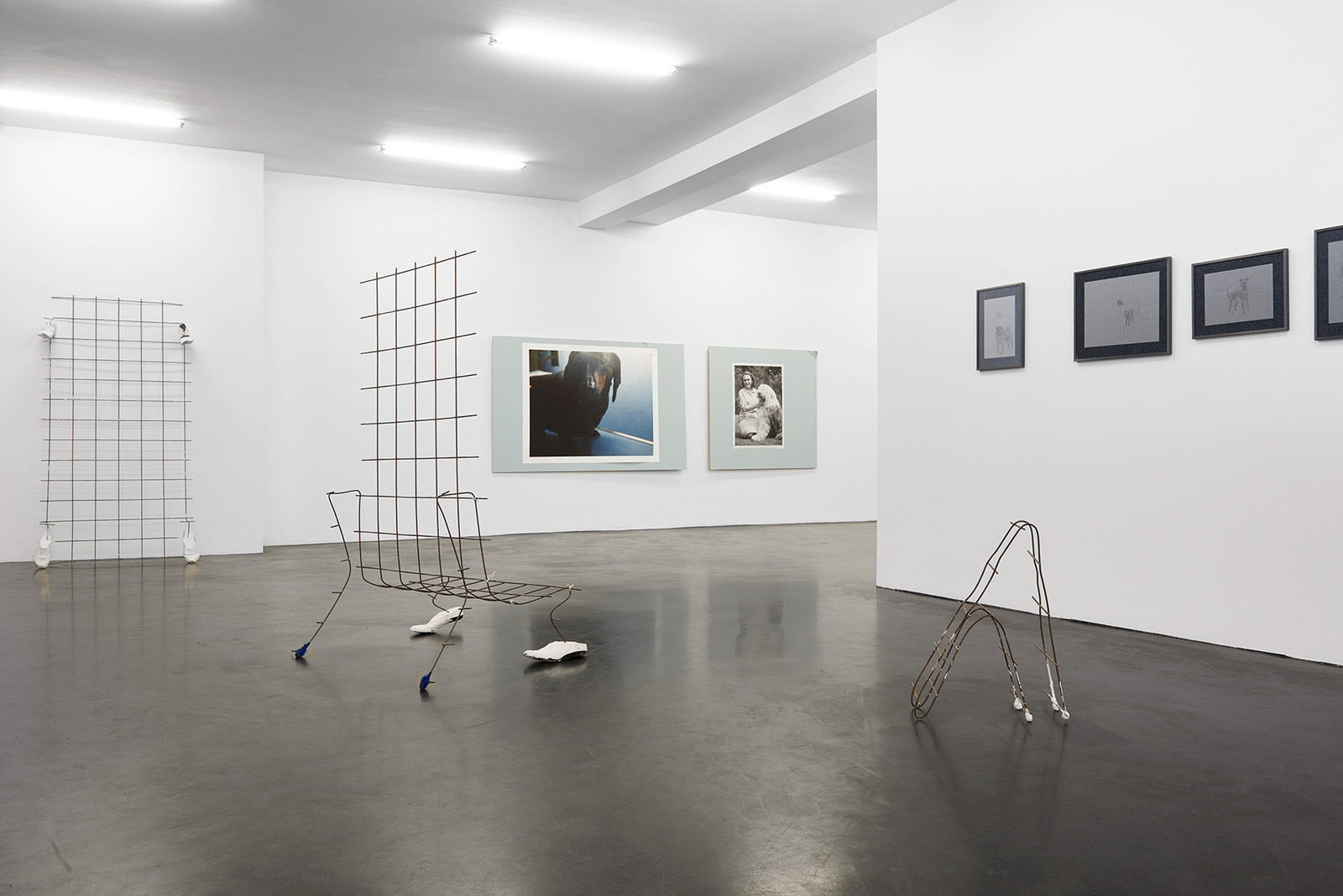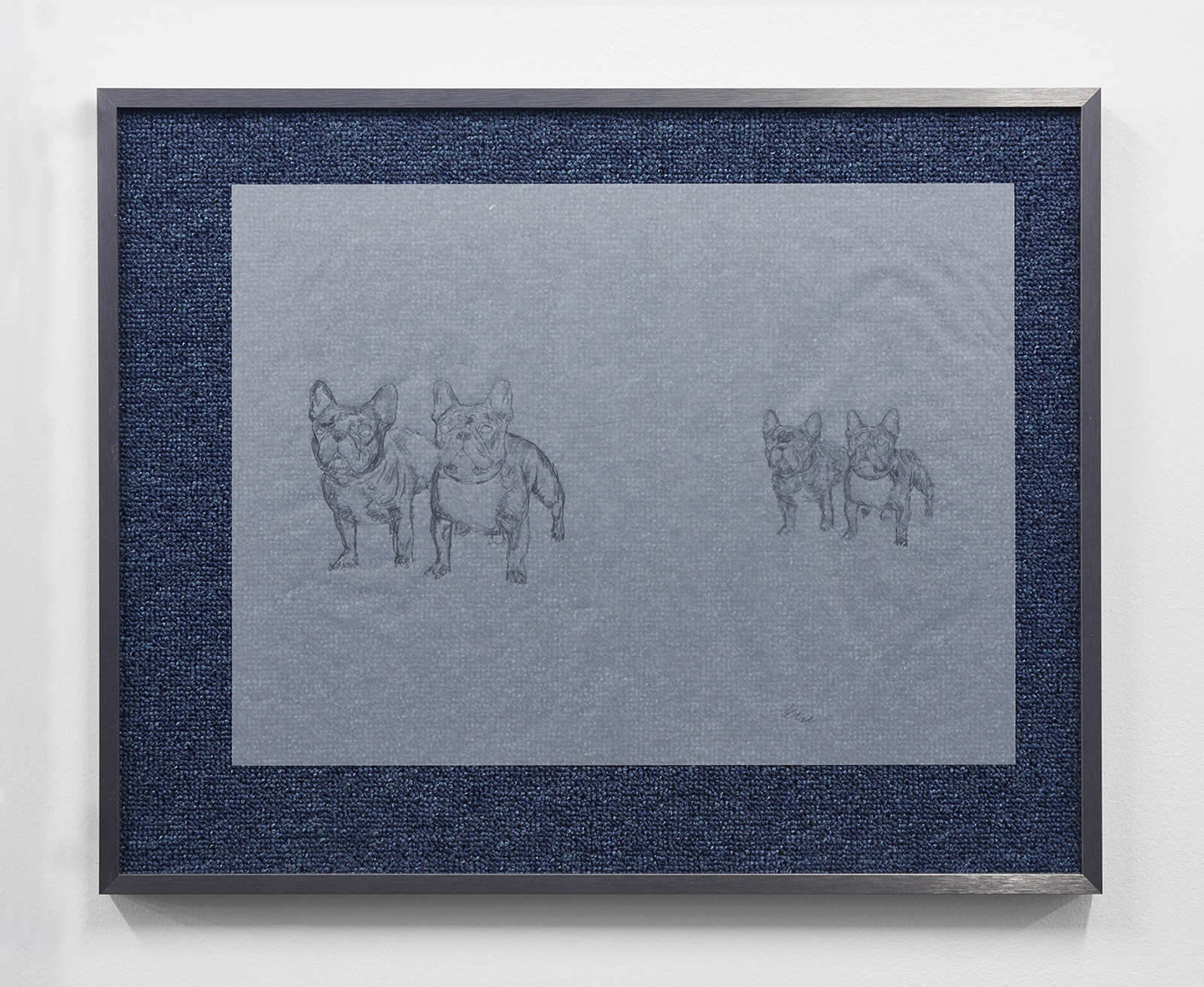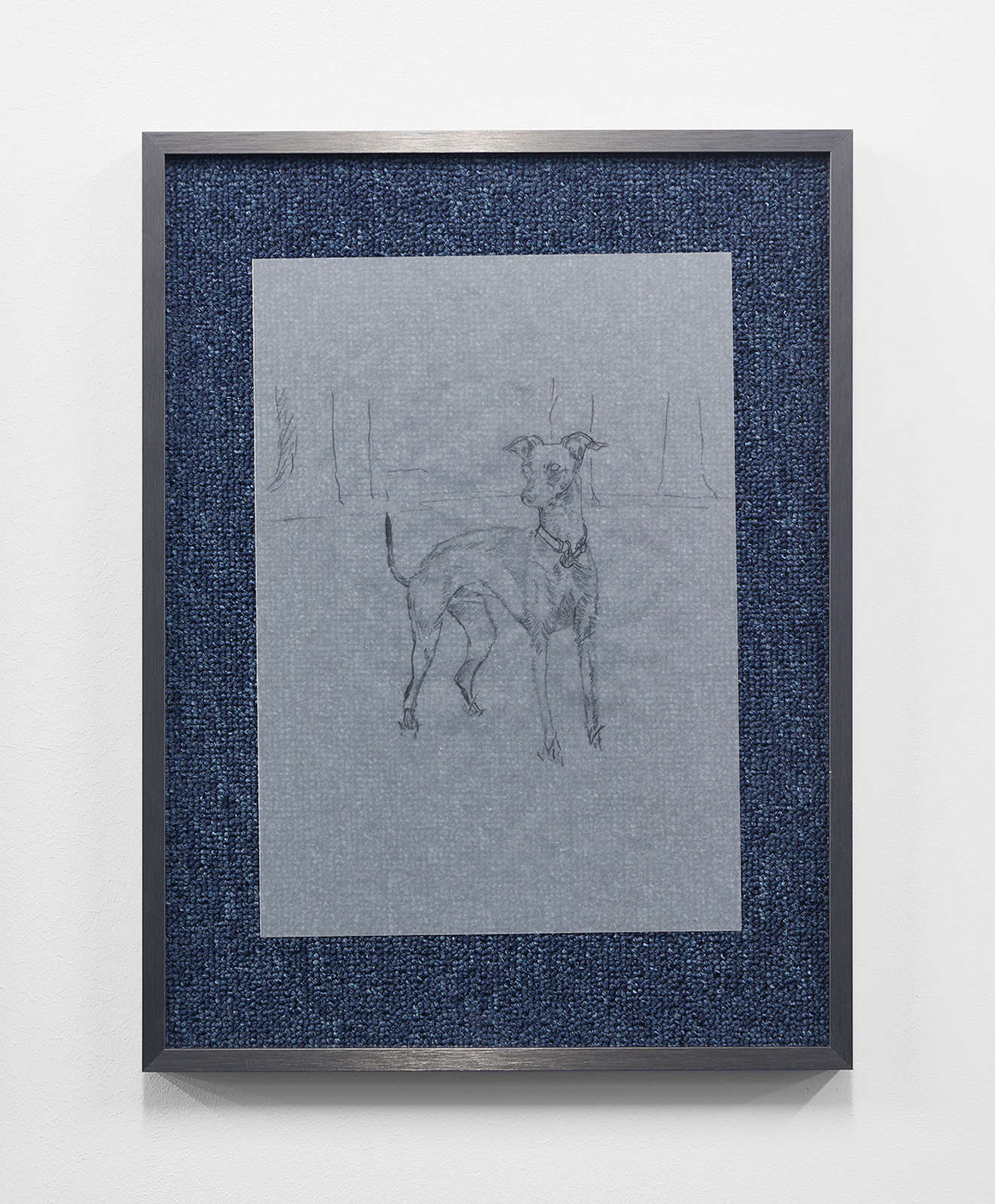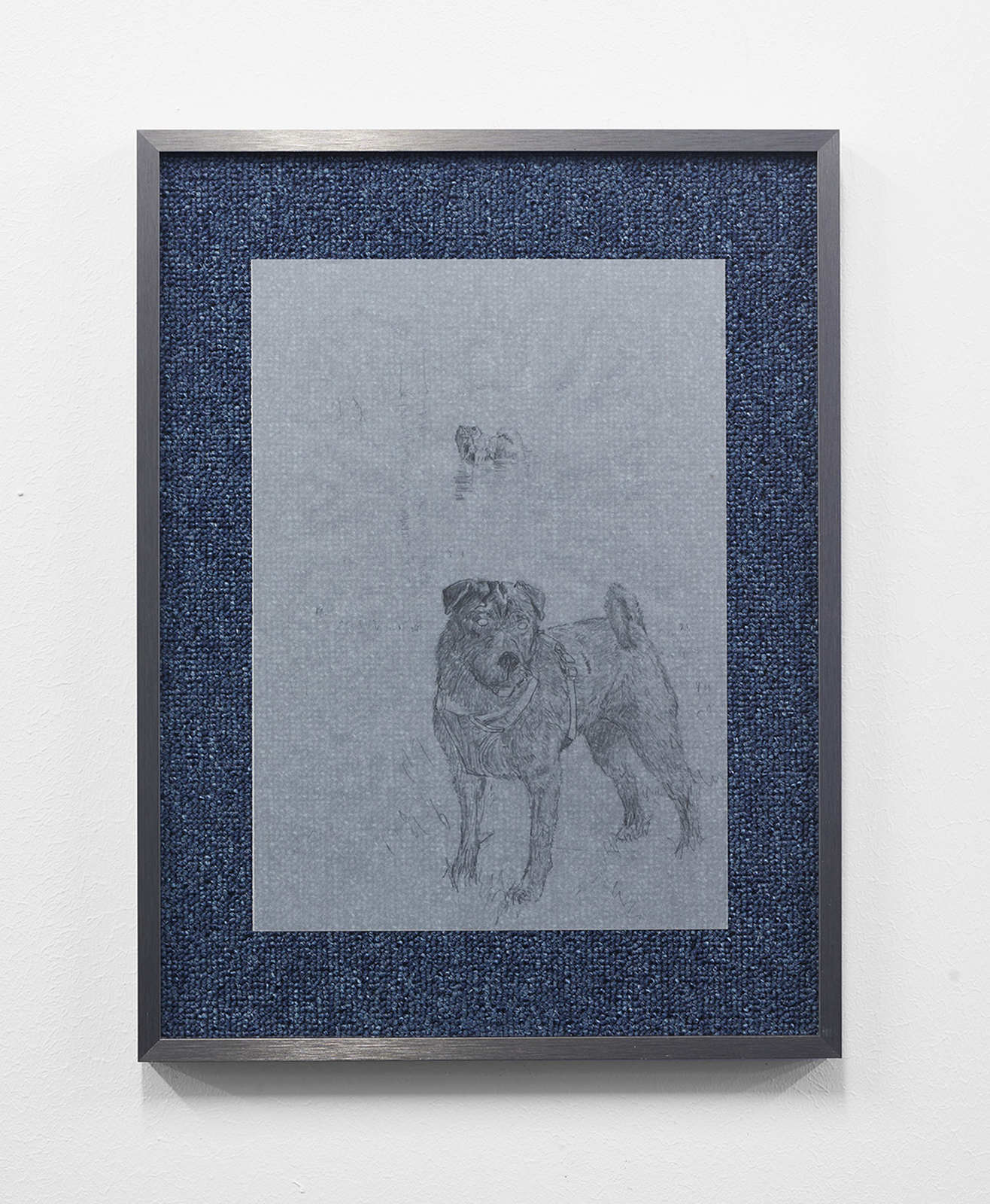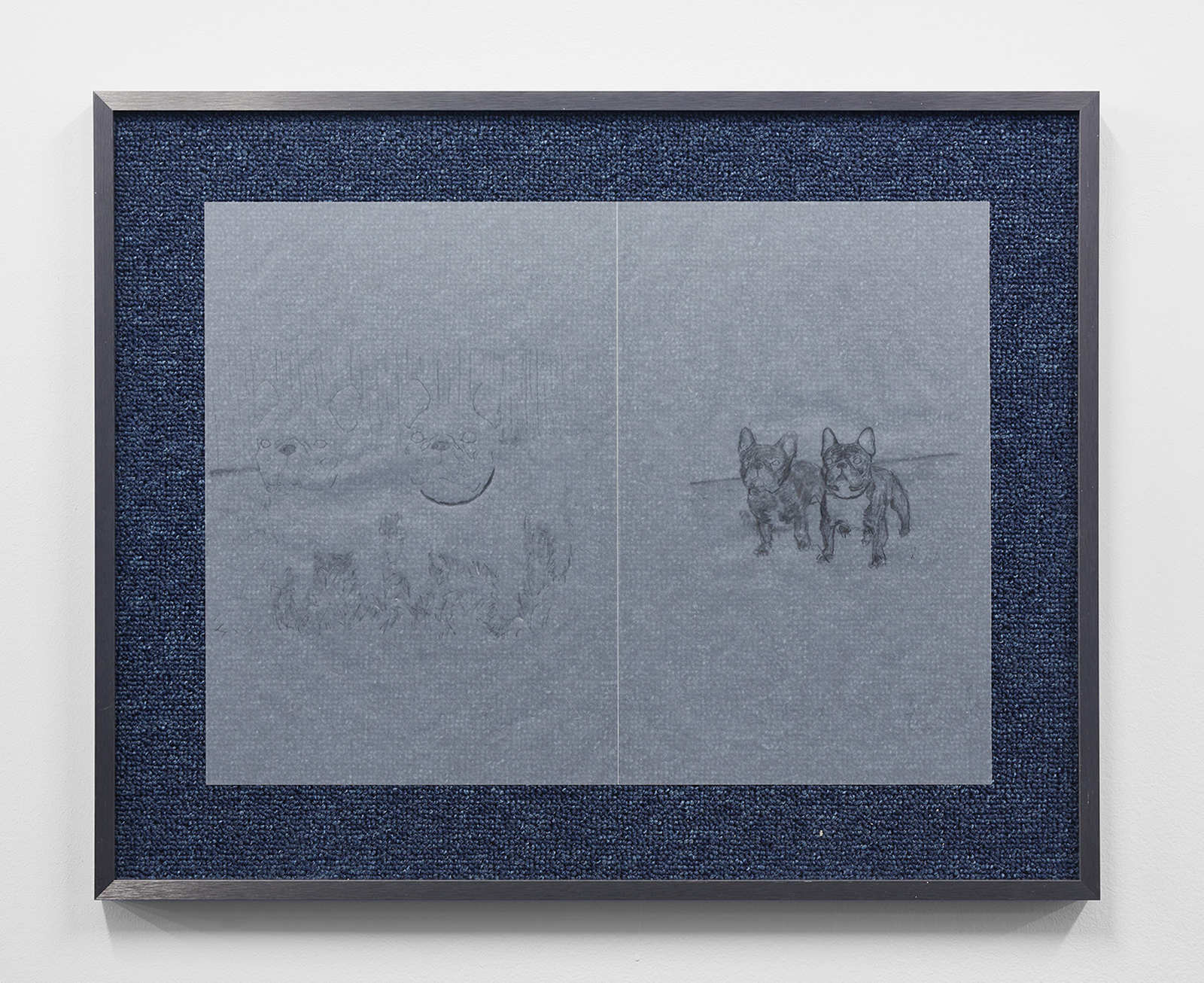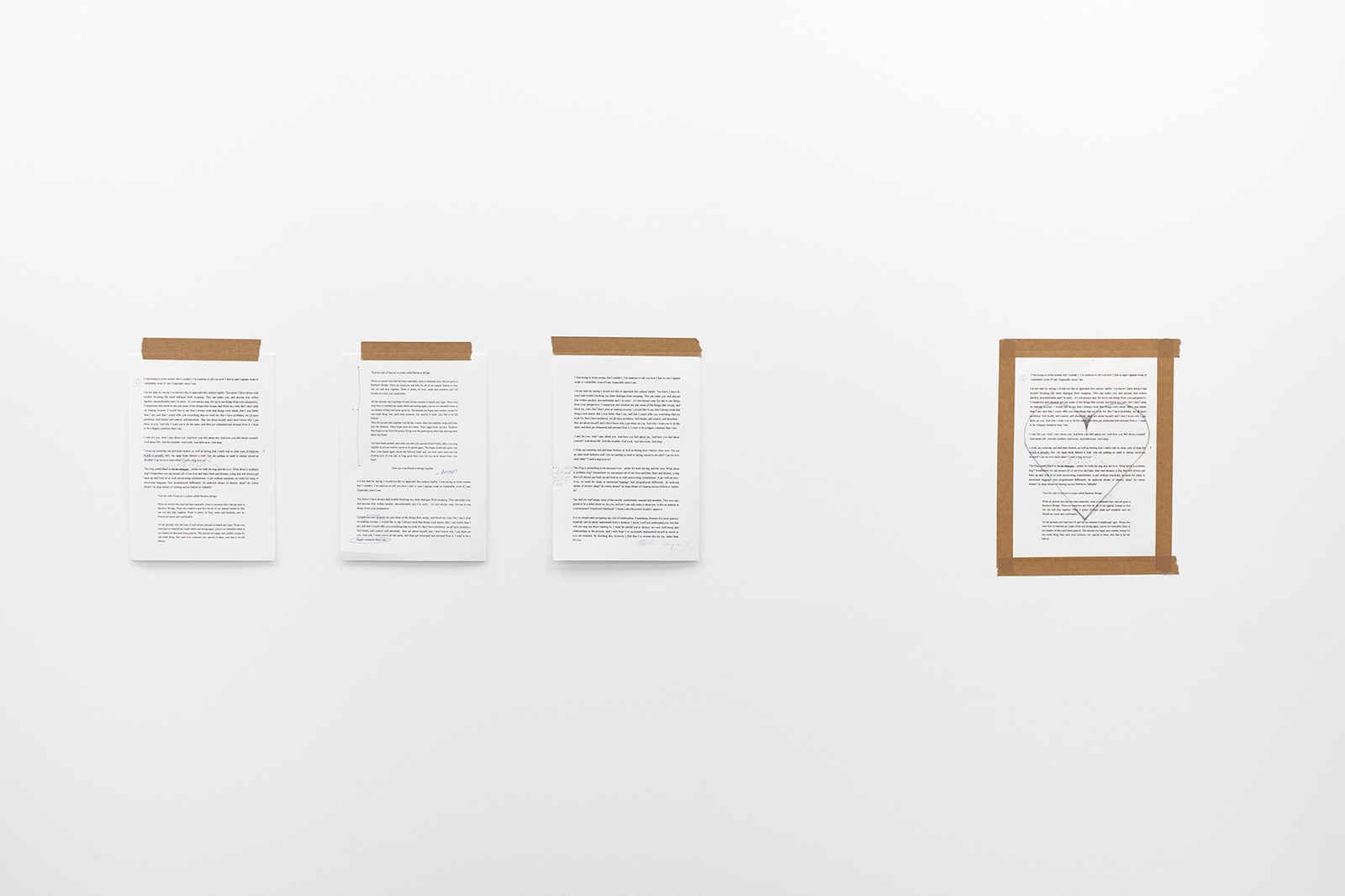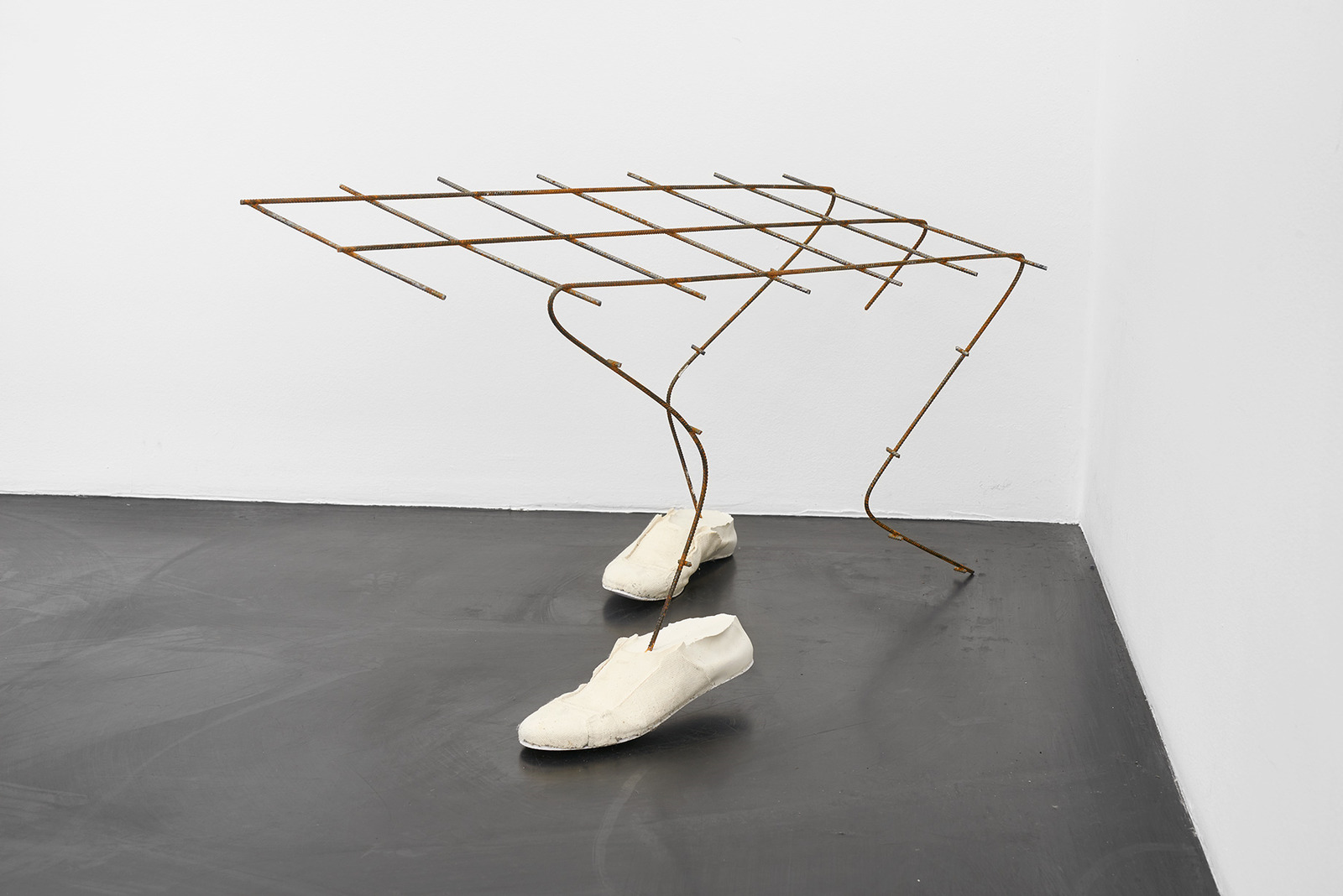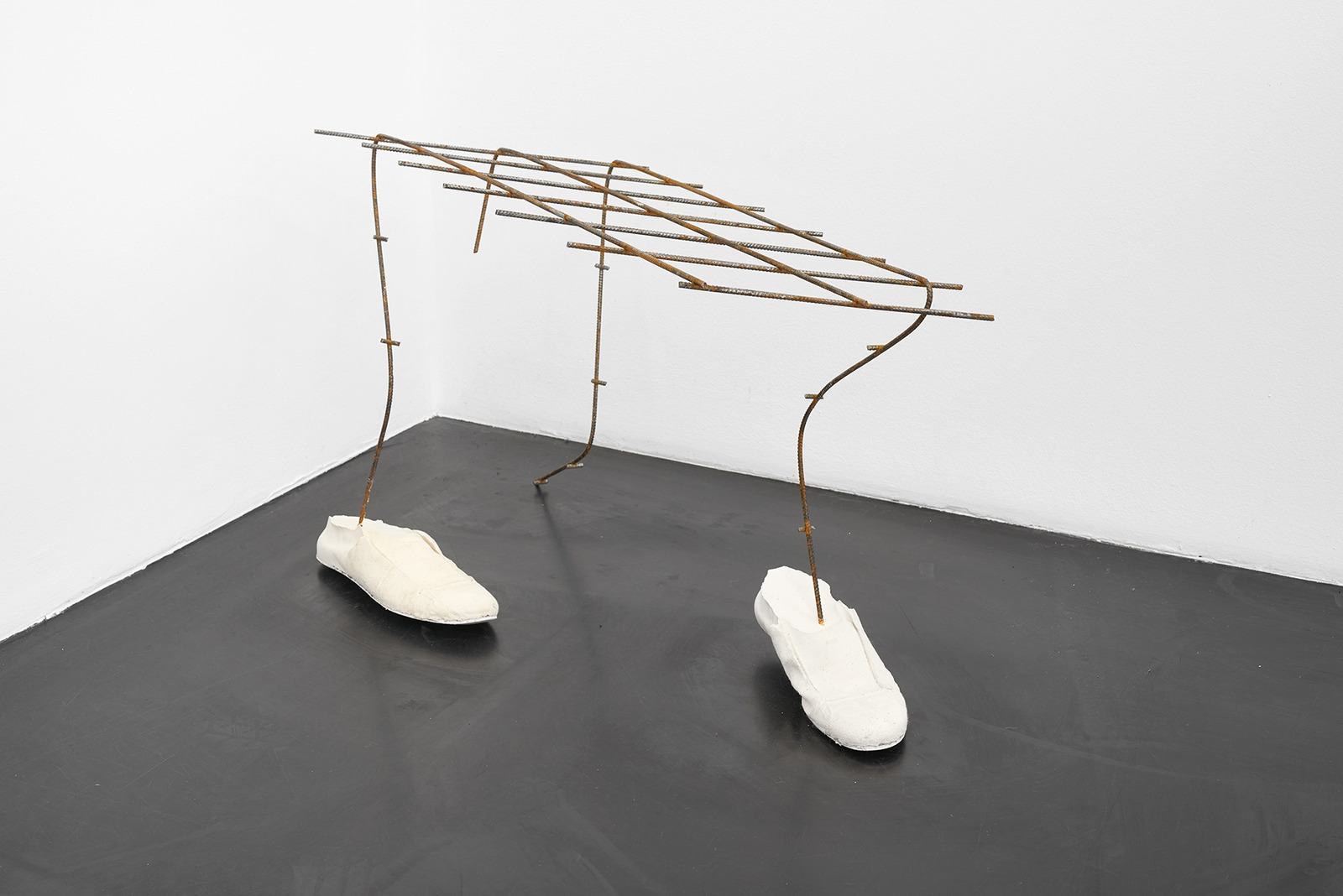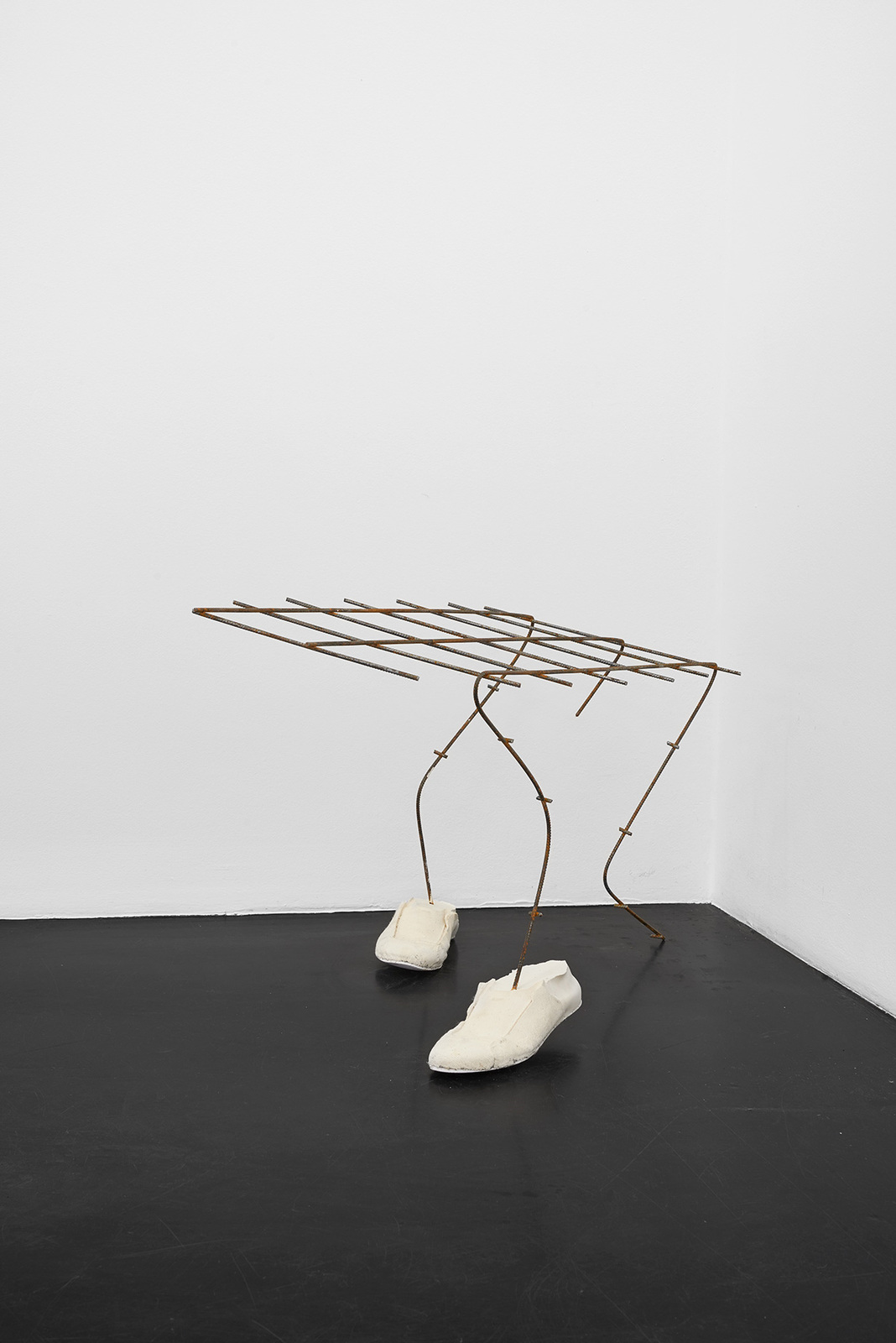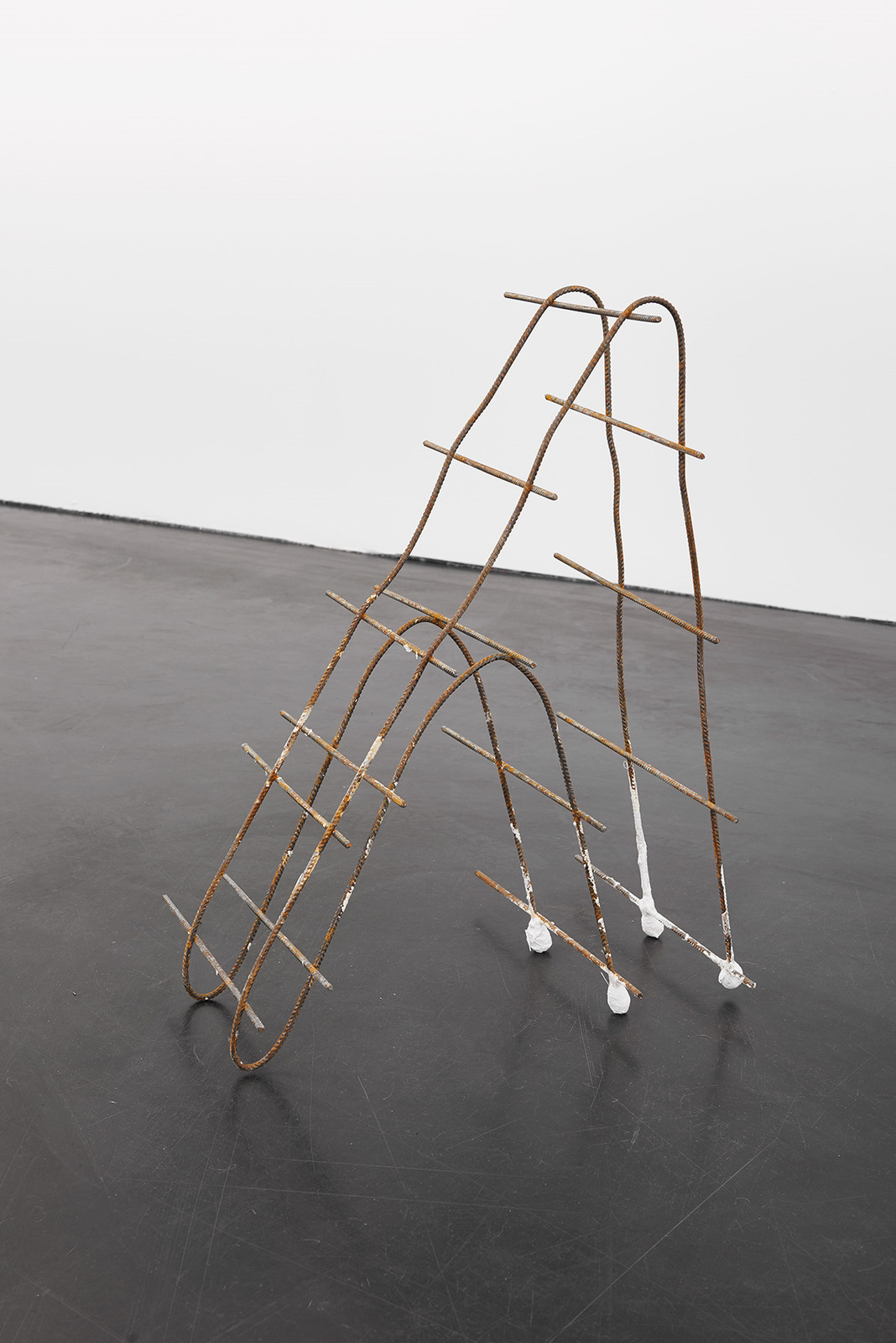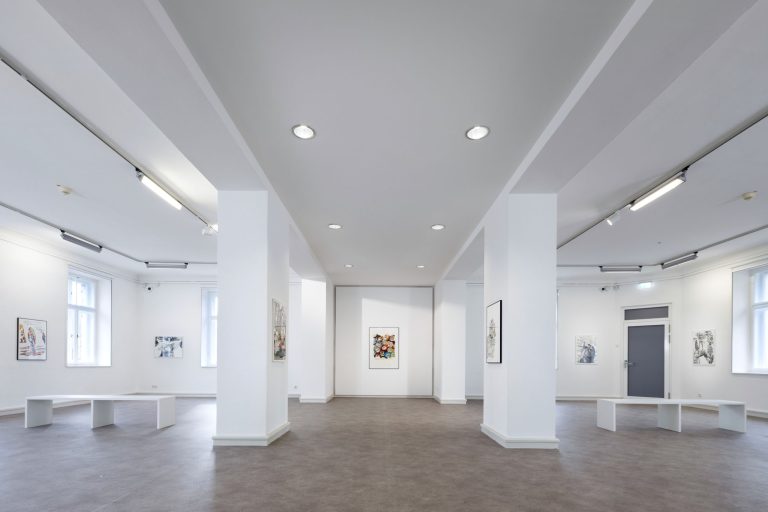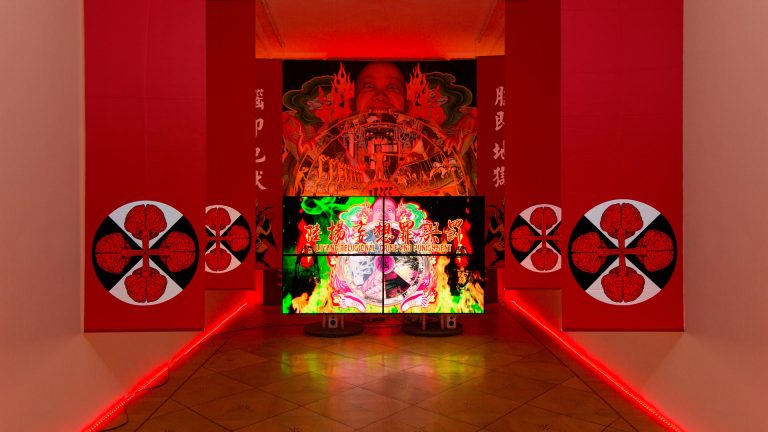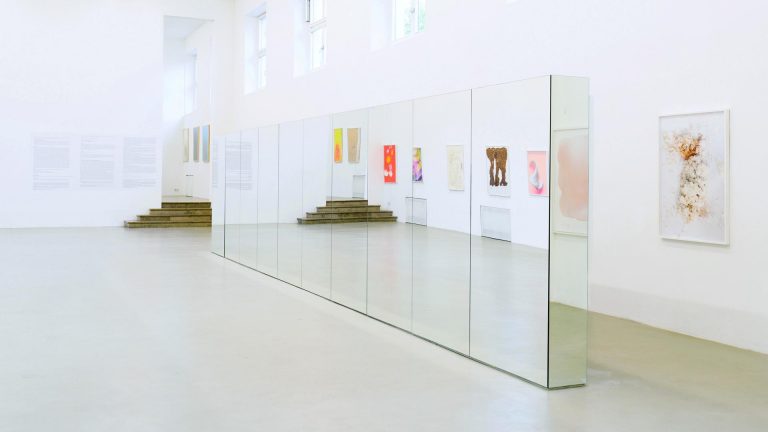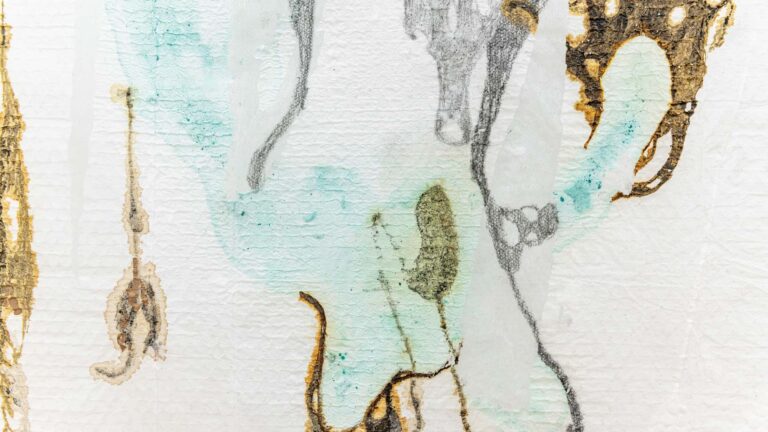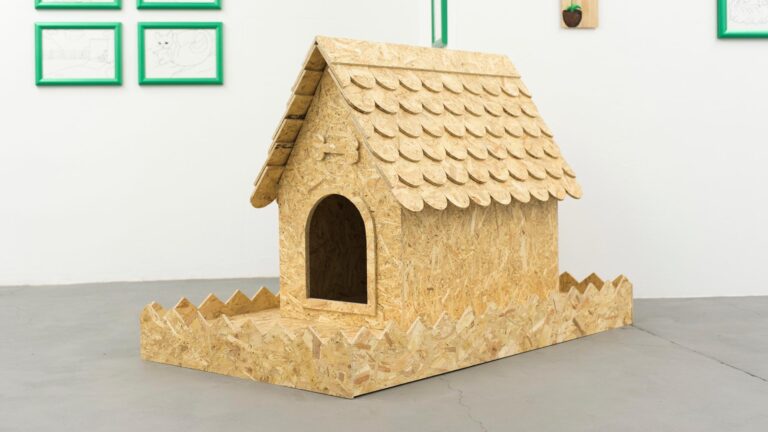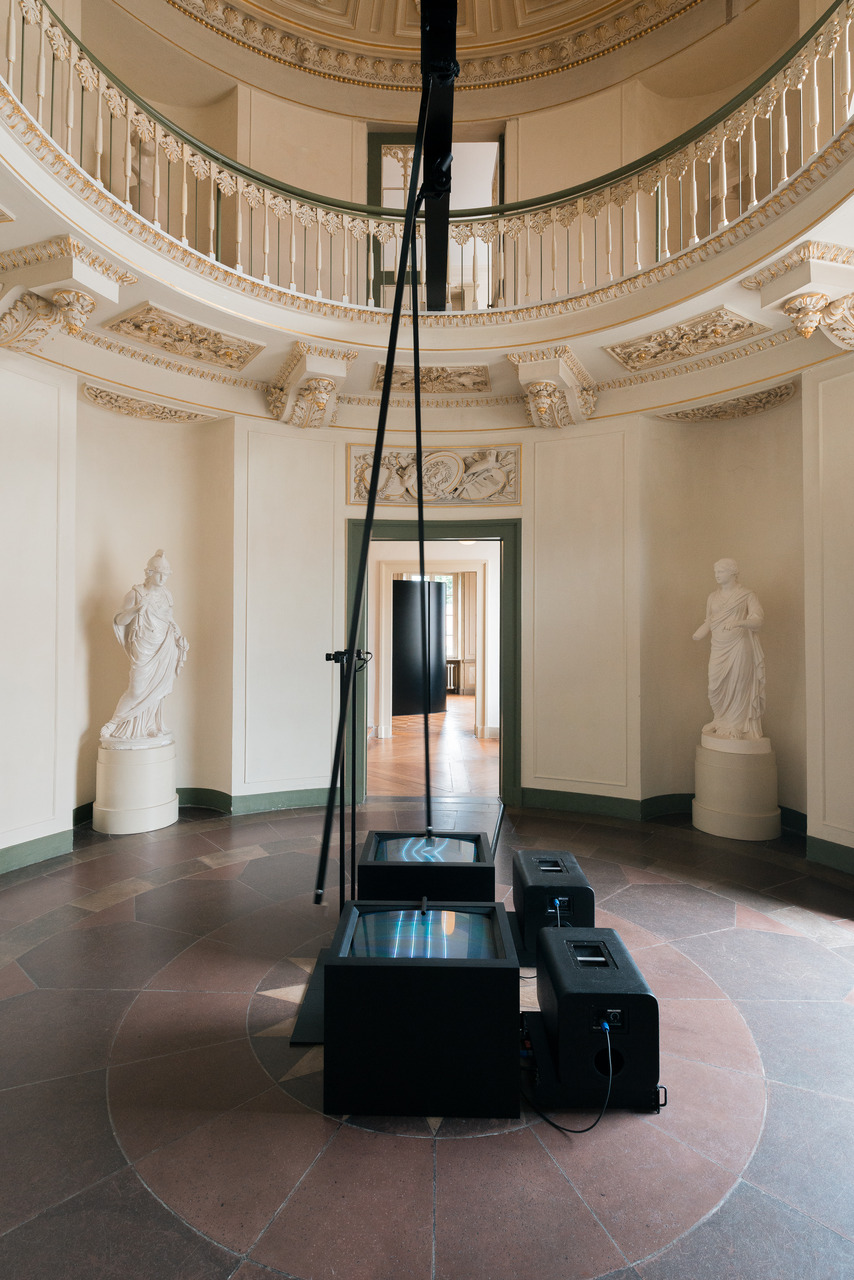Artist: George Rippon
Exhibition title: Ich bin Hund
Venue: Markus Lüttgen, Cologne, Germany
Date: September 2 – October 15, 2016
Photography: all images copyright and courtesy of the artist and Markus Lüttgen
„The love of a dog is a pure thing. He gives you a trust which is total. You must not betray it“ –Michel Houellebecq
Why is it that reading the letter George Rippon included in the exhibition “Ich bin Hund” makes me so furious? Perhaps I immediately feel addressed myself and therefore identify too much with the unknown addressee? I feel the writer wants to apologize for his behaviour towards me, but does not include me, my thoughts and feelings in his considerations and reflections. He doesn’t show any empathy. Probably it touches me on the raw, I don’t know. However, this letter throws us right into the central theme of George’s work. He exposes us for functionalizing the other as the mirror for one’s own self-reflection and the struggle for the construction of the self. In his work his own experience is often paradigmatic for the preoccupation with basic human subjects, such as the desire to be loved.
Just recently Michel Houellebecq – famous for his misanthropic perspective on society – dedicated a whole chapter of his exhibition at the Palais de Tokyo to his beloved dog Clément, seemingly exposing a sensitive side of himself. Culturalhistorically, the dog is considered the true friend and loyal companion of human kind. This connotation, however, lies a mixed blessing since the quality attested to the animal also express men’s assumption of their superiority – loyalty is too easily identified with subservience.
Houellebecqs’ memorial for his dog is symptomatic of his deep struggle with the fundamental concept of human relationships as defined by complex negotiation processes in which all involved parties have to reflect themselves, their behavior and the ability for empathy towards one another.
In his first solo-show with Markus Lüttgen, George Rippon presents a new body of work, in which the dog – visually as well as symbolically – is the central motif. He reflects on the ambiguity of the relationship between animal and master, which becomes the archetype for his pursuit of inter-human relationships and their fragility, instability and challenging nature.
In his recent series of sketchy pencil drawings and photographic appropriations of dog portraits, he has scanned and traced the way people stage their dogs, just like they would do with their relatives or officially as considered personalities.
The photograph he has appropriated for his invitation is one of the many images the Kennedy family used as an official press images showing Jacqueline Kennedy as the warm-hearted dog lover. Just like the traditional painting motif, Jackie is represented as the woman in the domestic environment wistfully reaching out to her true friend and companion in the outside world.
The separation of the mistress from her dog is emphasized by the grid-like structure of the window frame which introduces the second central and recurring motif in the exhibition, the grid. Since Renaissance times, the window grid is a proven instrument for the depiction of three-dimensional space, as well for organizing and mapping that space. In this sense it can also be associated with systems about closeness and distance in relationships.
The form of the grid is picked up in several works. For the objects in the space, rebar grid is used like skeletons to create seemingly figurative sculptures. They have casted inlays of used shoes as feet, detailed reproductions of the invisible surface of the shoes inner life, the parts which formerly enclosed, protected and stabilized some feet for days and weeks.
The repetitive set of lines defining a grid reappears in the pattern of the bed in the back of the exhibition space – a handmade, slightly hippiesque reinterpretation of the iconic blue check pattern of the Scandinavian luxury brand Hästens, a symbol for the contemporary successful and financially independent middle class and symptomatic for a new appeal of conservatism.
For Bed for Harmonie (2016), George invited his friend and fellow artist Hanna-Maria Hammari to collaborate. Together they crafted a full-size, but dilettante reproduction of the bed found in his apartment. To invite a friend for a reinterpretation of the bed one shares with their lover and companion carries a slightly ironic tone. It is both an intimate analysis of one’s relationship in dialogue with a close friend, as well as an attempt to equalize romantic relationships and friendships. Beds define a space for deep intimacy, and function as courts where fundamental negotiation processes take place. The bed becomes a shared space, allowing conversation and exchange to occur both in and around.
-Anna Goetz
George Rippon, Untitled (Girl and Boy), 2016
Framed pencil drawing on transparent paper, carpet, 40 x 30 cm
George Rippon, Untitled (Boy Boy), 2016
Framed pencil drawing on transparent paper, carpet, 40 x 50 cm
George Rippon, Untitled (Boy Boy), 2016
Framed pencil drawing on transparent paper, carpet, 40 x 50 cm
George Rippon, Untitled (Boy), 2016
Framed pencil drawing on transparent paper, carpet, 30 x 40 cm
George Rippon, Untitled (Boy), 2016
Framed pencil drawing on transparent paper, carpet, 40 x 30 cm
George Rippon, Untitled (Boy), 2016
Framed pencil drawing on transparent paper, carpet, 40 x 30 cm
George Rippon, Untitled (Boy), 2016
Framed pencil drawing on transparent paper, carpet, 40 x 30 cm
George Rippon, Untitled (Boy Girl)(Boy Girl), 2016
Framed pencil drawing on transparent paper, carpet, 40 x 50 cm
George Rippon, Untitled (Boy and Girl), 2016
Framed pencil drawing on transparent paper, carpet, 40 x 50 cm
George Rippon, Untitled (Girl Girl), 2016
Framed pencil drawing on transparent paper, carpet, 40 x 50 cm
George Rippon, Untitled (Boy Girl)(Boy Girl), 2016
Framed pencil drawing on transparent paper, carpet, 40 x 50 cm
George Rippon, Untitled (Girl), 2016
Framed pencil drawing on transparent paper, carpet, 40 x 30 cm
George Rippon, Untitled (Girl), 2016
Framed pencil drawing on transparent paper, carpet, 40 x 30 cm
George Rippon, Wall for Fritz, 2016
Plywood, aluminum, Farrow & Ball wallpaper, inkjet print, 200 x 125 centimeters
George Rippon, Wall for Olga and Jeeves, 2016
Plywood, aluminum, Farrow & Ball wallpaper, inkjet print, 133 x 125 centimeters
George Rippon, Poetry, 2016; Satire, 2016; Melancholy, 2016
Inkjet print on Awagami washi paper, packing tape
George Rippon, Yet to be titled, 2016
Pencil on Inkjet print on Awagami washi paper, packing tape, 32 x 23 cm
George Rippon, Over, Under and In, 2016
Rebar grid, plaster, insoles, coins, string, Dimensions variable
George Rippon, Over, Under and In, 2016
Rebar grid, plaster, insoles, coins, string, Dimensions variable
George Rippon, Diesel, 2016
Rebar grid, plaster, insoles, Dimensions variable
George Rippon, Diesel, 2016
Rebar grid, plaster, insoles, Dimensions variable
George Rippon, Diesel, 2016
Rebar grid, plaster, insoles, Dimensions variable
George Rippon, Flush, 2016
Rebar grid, plaster, Dimensions variable
George Rippon, Imaginary Man, 2016
Rebar grid, plaster, insoles, tongue, string, Dimensions variable
George Rippon, Bed for Harmonie, 2016
(in collaboration with Hanna-Maria Hammari), Dyed cotton, foam, air mattress, batting
George Rippon, Bed for Harmonie, 2016
(in collaboration with Hanna-Maria Hammari), Dyed cotton, foam, air mattress, batting
George Rippon, For Becky, 2016
Watercolor on training pad, 55 x 55 cm
George Rippon, For Poppy, 2016
Watercolor on training pad, 55 x 55 cm
George Rippon, For Sweetie, 2016
Watercolor on training pad, 55 x 55 cm
George Rippon, For Romeo, 2016
Watercolor on training pad, 55 x 55 cm






